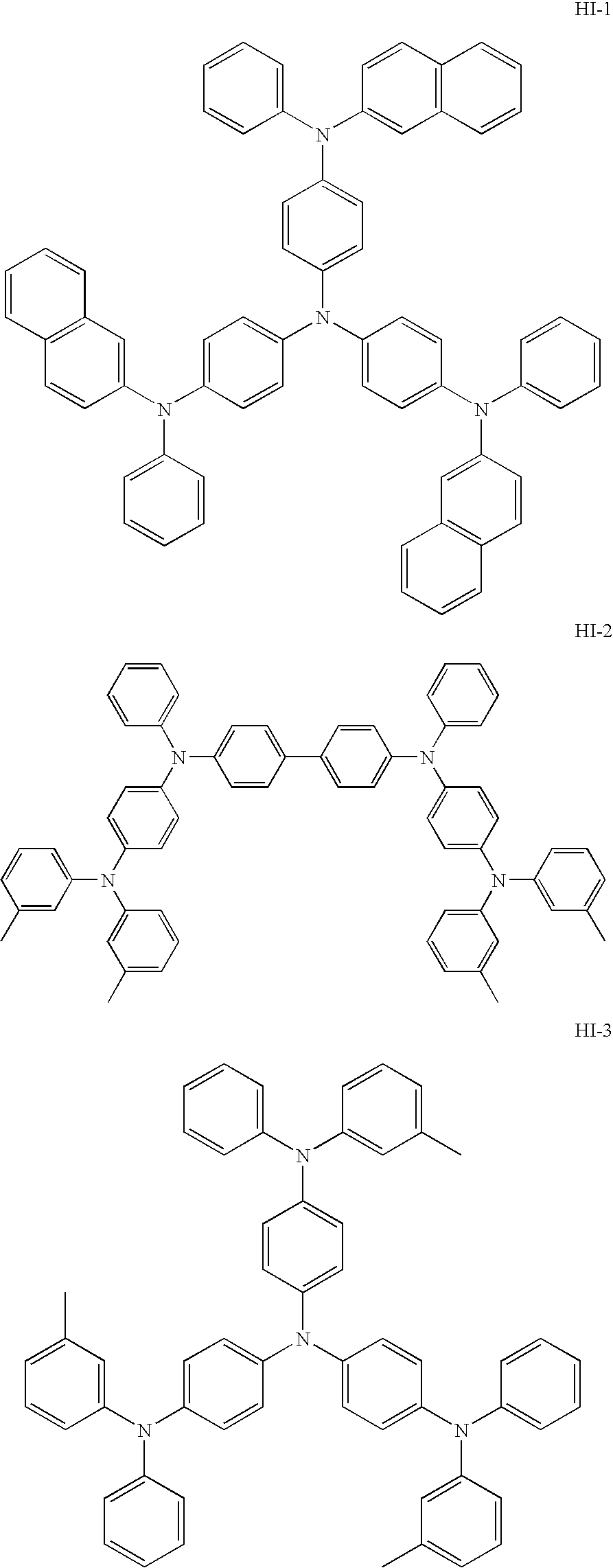Method for producing organic electroluminescence element and organic electroluminescence element
a technology of electroluminescence element and organic electroluminescence element, which is applied in the direction of coating, chemical vapor deposition coating, plasma technique, etc., can solve the problems of uniform light emission, inability to obtain sufficient durability, and decrease in the drive voltage, so as to achieve the effect of reducing the durability
- Summary
- Abstract
- Description
- Claims
- Application Information
AI Technical Summary
Benefits of technology
Problems solved by technology
Method used
Image
Examples
examples
[0142]The present invention will next be described by way of examples, which should not be construed as limiting the present invention thereto.
example 1
[0160]The procedure of Comparative Example 5 was repeated, except that the hole-injection layer was doped with an electron-accepting dopant (F4TCQN) in an amount of 0.3% by mass with respect to the material of the hole-injection layer, to thereby produce an organic electroluminescence element of Example 1.
example 2
[0161]The procedure of Comparative Example 6 was repeated, except that the hole-injection layer was doped with an electron-accepting dopant (F4TCQN) in an amount of 0.3% by mass with respect to the material of the hole-injection layer, to thereby produce an organic electroluminescence element of Example 2.
PUM
| Property | Measurement | Unit |
|---|---|---|
| current density | aaaaa | aaaaa |
| current density | aaaaa | aaaaa |
| depth | aaaaa | aaaaa |
Abstract
Description
Claims
Application Information
 Login to View More
Login to View More - R&D
- Intellectual Property
- Life Sciences
- Materials
- Tech Scout
- Unparalleled Data Quality
- Higher Quality Content
- 60% Fewer Hallucinations
Browse by: Latest US Patents, China's latest patents, Technical Efficacy Thesaurus, Application Domain, Technology Topic, Popular Technical Reports.
© 2025 PatSnap. All rights reserved.Legal|Privacy policy|Modern Slavery Act Transparency Statement|Sitemap|About US| Contact US: help@patsnap.com



